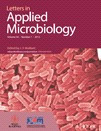Nunvar J, Drevinek P, Licha I. Lett Appl Microbiol. 2012 Jan;54(1):59–66. doi: 10.1111/j.1472-765X.2011.03172.x. Epub 2011 Nov 23. IF: 1.622

Department of Medical Microbiology
Abstract
AIMS: The aim of this study was to develop a simple protocol for a PCR-based fingerprinting of Stenotrophomonas maltophilia (SmrepPCR) that utilizes primers complementary to repetitive extragenic palindromic elements (REPs) of this micro-organism. METHODS AND RESULTS: The relatedness of 34 isolates of environmental and clinical origin was investigated by two SmrepPCRs with two different primers, gyrB sequencing and XbaI macrorestriction followed by pulsed-field gel electrophoresis. While SmrepPCR (with primer DIR) results matched data obtained from the analysis of gyrB nucleotide sequences and identified several clonal complexes, XbaI macrorestriction showed high level of heterogeneity between isolates. The macrorestriction-based clustering of isolates did not correspond to both gyrB and DIR-SmrepPCR grouping. CONCLUSIONS: Our results show that SmrepPCR-inferred relationship of isolates is in a good agreement with sequence-based methods. The combined information from all methods used suggests that rapid evolution of S. maltophilia genomes might be predominantly due to high rate of rearrangements caused by mobile genetic elements. SIGNIFICANCE AND IMPACT OF THE STUDY: The presented method is an inexpensive and easy to perform alternative to genotype S. maltophilia isolates and to study their population genetics. SmrepPCR demonstrates the usefulness of species-specific repetitive elements in genomic analyses.
-mk-
